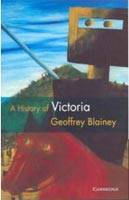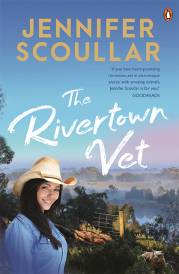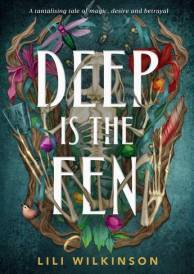Geoffrey Blainey pens first history of Victoria in over 20 years.

Geoffrey Blainey pens first history of Victoria in over 20 years.
So many things we never knew about our own state.
The history of the place we now know as Victoria did not begin with the settlement of Melbourne. Of course the history of aboriginal occupation dates back many thousands of years prior, to a time when any 'Victorian' could have walked overland to 'Tasmania'.
In fact the first settlements in Victoria were not in Melbourne at all, but Sorrento and Portland many years earlier. Such is our Melbourne-orientation that this is not often told in the traditional tales of the development of our state. It seems there is a lot about Victoria we simply don't know (anyone requiring further evidence should jump straight to the 25 things you never knew aboout Victoria's history at the end of this release).
Thankfully, for the first time in a generation, Australia's most renowned historian attempts to address this, by turning his attention to the state in which he was born and still calls home. In a climate where debates about history and the way it is taught abound, this is an important new work from a universally respected figure. Blainey is uniquely positioned to write this book, able to tap into a lifetime's knowledge and research at the peak of his field.
"Much evidence in the chapters on social history is the accumulation of casual reading of old newspapers, looking at historic sites, and talking with old people, many of whom remembered the 1860s 1870s and 1880s", said Professor Blainey.
Although sometimes viewed as a combatant in the 'History Wars', Blainey offers balanced and candid assessments of both sides of politics and the issues he broaches.
Blainey speaks favourably of Joan Kirner, "she commenced her public duties with a dignity and courtesy that commanded respect", and Jeff Kennett alike; "where some leaders would have tinkered and mended, he tore up or pulled down and began afresh."
Blainey is also one of the first historians to offer a survey of the Bracks years, predicting Labour's changes to the Upper House may prove "one of the momentous changes in the history of Victorian politics" in dramatically boosting the electoral power of smaller parties.
Blainey's history takes the reader from aboriginal times to the arrival of the early settlers and their sheep, through some of the biggest gold rushes the world has ever seen, the booms and the busts, the bushfires, the droughts, wars and depression.
He also dedicates an entire chapter to analysing the Melbourne-Sydney rivalry, and "rarely in the modern world have two big cities competed so strenuously, so evenly and so long", he says. Blainey looks at the causes and effects of this bitter contest. He suggests the slow growth of Canberra as a viable capital can take much of the blame, remembering that it was created as a means of allaying the rivalry.
Prof. Blainey closes by reflecting on what makes Victoria unique amongst Australian states, concluding that "while Australia as a whole is one of the most sparsely settled places anywhere, Victoria is closely settled by the standards of many large regions of the world."
However, while size and abundant resources may be fuelling WA and Queensland's present boom, Professor Blainey is optimistic for the state's future in a more knowledge-based international economy, noting "mental power, energy and ingenuity are the new 'natural resources'", and Victoria's history shows we have always had these in abundance.
2. In 1848 the only person standing for election in the six colonial seats of Port Phillip District was the British Earl Grey, living some twelve thousand miles away. He was duly elected to general uproar.
3. Victoria's early irrigation schemes held such glamour that a picture of the Goulburn Weir appeared on the first ever series of Commonwealth banknotes.
4. In the month after the outbreak of World War I, five enemy ships separately entered Port Phillip Heads, not knowing that there was a war. Few ships in 1914 carried a wireless.
5. Gold rush fever was so strong in 1851 that about half the men in Victoria were on the goldfields, and of Melbourne's forty municipal policemen, thirty-eight had resigned for the diggings.
6. By 1858 at the height of the gold rush, Victoria would have held just over half the population of the entire nation.
7. Probably the world's largest gold nugget, the 'Welcome Stranger' was unearthed near Dunolly, on a much-trodden part of the goldfields, just a few inches below the soil by the wheel of a puddler's cart!
8. For nearly forty years until 1891, Bendigo was officially known as Sandhurst before the name Bendigo was restored by local referendum.
9. The Great Ocean Road was originally planned as a war memorial. It was largely built by returned soldiers from World War One.
10. Australia's first telephone exchange opened in Collins Street in the 1880s. In its early days the two female telephone operators could carry in their head all the telephone numbers in Victoria (all 128 of them!)
11. Victoria's biggest funeral in the 19th century, boasting a procession down Swanston Street two miles long, was that of jockey Tommy Corrigan, killed during a steeplechase at Caulfield.
12. In the winter of 1886, more than 45 000 Victorian women signed a petition against the consumption of alcohol which formed a roll of paper one third of a mile long.
13. Ocean Grove, near Geelong was originally founded as a holiday town for the thriving temperance movement, and no liquor vending institutions were permitted.
14. Early on in its development, players of what was originally known as 'Victorian Rules' football were expected to shout the word 'mark' every time they took one.
15. In 1878, when the Melbourne Hospital decided to reduce the use of brandy as a medicine, one patient whose paralysed legs had defied all treatment suddenly walked from the hospital and was never seen again.
16. Opening in Bourke Street in 1911, it was claimed that such was the success of Sydney Myer's regular Monday morning sales that it almost changed the washing day of Melbourne's housewives to Tuesdays.
17. In 1942, following Japanese air raids on Darwin, air raid trenches were hastily dug in parks and gardens all across the state, including the Treasury Gardens.
18. Australia's first long railway was built from Melbourne to the river port of Echuca in 1864.
19. In 1891, Melbourne's population was almost half a million, making it considerably larger than Los Angeles at the time. 20. During the Black Thursday bushfires in February 1851, the north wind was so fierce that the thick smoke reached northern Tasmania, turning day into night.
21. A Ballarat inventor, Henry Sutton, invented a version of television in the 1880s, long before Baird invented his in England. Sadly, he never patented the device.
22. In the 1870s, Ballarat held 477 hotels - one hotel for every 60 adults.
23. Until John Cain won the state election in 1982, Labor had ruled Victoria for a total of only 9 years.
24. Today's great ocean liners were made possible by the the son of a Maldon gold-miner, AGM Michell who invented a device called the Michell thrust-bearing.
25. In earlier centuries, Aborigines in Victoria made massive possum skin cloaks, using a bone needle to sew the home-made thread. At least one was documented as consisting of 81 skins. -- Adam Ford,
So many things we never knew about our own state.
The history of the place we now know as Victoria did not begin with the settlement of Melbourne. Of course the history of aboriginal occupation dates back many thousands of years prior, to a time when any 'Victorian' could have walked overland to 'Tasmania'.
In fact the first settlements in Victoria were not in Melbourne at all, but Sorrento and Portland many years earlier. Such is our Melbourne-orientation that this is not often told in the traditional tales of the development of our state. It seems there is a lot about Victoria we simply don't know (anyone requiring further evidence should jump straight to the 25 things you never knew aboout Victoria's history at the end of this release).
Thankfully, for the first time in a generation, Australia's most renowned historian attempts to address this, by turning his attention to the state in which he was born and still calls home. In a climate where debates about history and the way it is taught abound, this is an important new work from a universally respected figure. Blainey is uniquely positioned to write this book, able to tap into a lifetime's knowledge and research at the peak of his field.
"Much evidence in the chapters on social history is the accumulation of casual reading of old newspapers, looking at historic sites, and talking with old people, many of whom remembered the 1860s 1870s and 1880s", said Professor Blainey.
Although sometimes viewed as a combatant in the 'History Wars', Blainey offers balanced and candid assessments of both sides of politics and the issues he broaches.
Blainey speaks favourably of Joan Kirner, "she commenced her public duties with a dignity and courtesy that commanded respect", and Jeff Kennett alike; "where some leaders would have tinkered and mended, he tore up or pulled down and began afresh."
Blainey is also one of the first historians to offer a survey of the Bracks years, predicting Labour's changes to the Upper House may prove "one of the momentous changes in the history of Victorian politics" in dramatically boosting the electoral power of smaller parties.
Blainey's history takes the reader from aboriginal times to the arrival of the early settlers and their sheep, through some of the biggest gold rushes the world has ever seen, the booms and the busts, the bushfires, the droughts, wars and depression.
He also dedicates an entire chapter to analysing the Melbourne-Sydney rivalry, and "rarely in the modern world have two big cities competed so strenuously, so evenly and so long", he says. Blainey looks at the causes and effects of this bitter contest. He suggests the slow growth of Canberra as a viable capital can take much of the blame, remembering that it was created as a means of allaying the rivalry.
Prof. Blainey closes by reflecting on what makes Victoria unique amongst Australian states, concluding that "while Australia as a whole is one of the most sparsely settled places anywhere, Victoria is closely settled by the standards of many large regions of the world."
However, while size and abundant resources may be fuelling WA and Queensland's present boom, Professor Blainey is optimistic for the state's future in a more knowledge-based international economy, noting "mental power, energy and ingenuity are the new 'natural resources'", and Victoria's history shows we have always had these in abundance.
25 things you never knew about Victoria's history from 'A History of Victoria' by Geoffrey Blainey.
1. Growing in 10 years from a population of just 450, by 1850 Geelong was the 5th largest city in Australia, with its port probably busier than Melbourne's.2. In 1848 the only person standing for election in the six colonial seats of Port Phillip District was the British Earl Grey, living some twelve thousand miles away. He was duly elected to general uproar.
3. Victoria's early irrigation schemes held such glamour that a picture of the Goulburn Weir appeared on the first ever series of Commonwealth banknotes.
4. In the month after the outbreak of World War I, five enemy ships separately entered Port Phillip Heads, not knowing that there was a war. Few ships in 1914 carried a wireless.
5. Gold rush fever was so strong in 1851 that about half the men in Victoria were on the goldfields, and of Melbourne's forty municipal policemen, thirty-eight had resigned for the diggings.
6. By 1858 at the height of the gold rush, Victoria would have held just over half the population of the entire nation.
7. Probably the world's largest gold nugget, the 'Welcome Stranger' was unearthed near Dunolly, on a much-trodden part of the goldfields, just a few inches below the soil by the wheel of a puddler's cart!
8. For nearly forty years until 1891, Bendigo was officially known as Sandhurst before the name Bendigo was restored by local referendum.
9. The Great Ocean Road was originally planned as a war memorial. It was largely built by returned soldiers from World War One.
10. Australia's first telephone exchange opened in Collins Street in the 1880s. In its early days the two female telephone operators could carry in their head all the telephone numbers in Victoria (all 128 of them!)
11. Victoria's biggest funeral in the 19th century, boasting a procession down Swanston Street two miles long, was that of jockey Tommy Corrigan, killed during a steeplechase at Caulfield.
12. In the winter of 1886, more than 45 000 Victorian women signed a petition against the consumption of alcohol which formed a roll of paper one third of a mile long.
13. Ocean Grove, near Geelong was originally founded as a holiday town for the thriving temperance movement, and no liquor vending institutions were permitted.
14. Early on in its development, players of what was originally known as 'Victorian Rules' football were expected to shout the word 'mark' every time they took one.
15. In 1878, when the Melbourne Hospital decided to reduce the use of brandy as a medicine, one patient whose paralysed legs had defied all treatment suddenly walked from the hospital and was never seen again.
16. Opening in Bourke Street in 1911, it was claimed that such was the success of Sydney Myer's regular Monday morning sales that it almost changed the washing day of Melbourne's housewives to Tuesdays.
17. In 1942, following Japanese air raids on Darwin, air raid trenches were hastily dug in parks and gardens all across the state, including the Treasury Gardens.
18. Australia's first long railway was built from Melbourne to the river port of Echuca in 1864.
19. In 1891, Melbourne's population was almost half a million, making it considerably larger than Los Angeles at the time. 20. During the Black Thursday bushfires in February 1851, the north wind was so fierce that the thick smoke reached northern Tasmania, turning day into night.
21. A Ballarat inventor, Henry Sutton, invented a version of television in the 1880s, long before Baird invented his in England. Sadly, he never patented the device.
22. In the 1870s, Ballarat held 477 hotels - one hotel for every 60 adults.
23. Until John Cain won the state election in 1982, Labor had ruled Victoria for a total of only 9 years.
24. Today's great ocean liners were made possible by the the son of a Maldon gold-miner, AGM Michell who invented a device called the Michell thrust-bearing.
25. In earlier centuries, Aborigines in Victoria made massive possum skin cloaks, using a bone needle to sew the home-made thread. At least one was documented as consisting of 81 skins. -- Adam Ford,
MORE
Copyright © 2001 - Girl.com.au, a Trillion.com Company - All rights reserved. 6-8 East Concourse, Beaumaris, Vic 3193, Australia.





